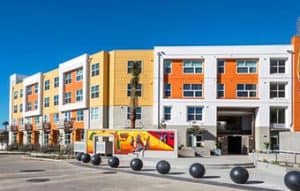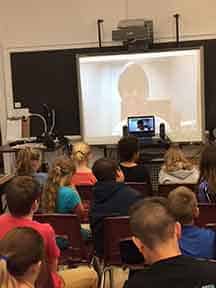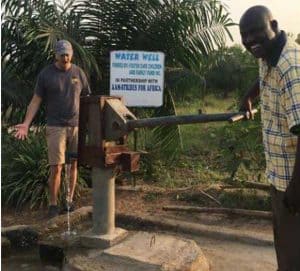

Both associations are providing guidance, as many waste management activities must continue. SCS is following association advice, state protocols, and our clients’ recommendations in our own procedures as we continue to perform essential work. We share the SWANA resources and recommendations here and thank them for their dedication. SCS employees should use SCS resources available on the SCS intranet and through our Health & Safety protocol, which reflect the safety precautions advised here.
Reprinted Letter to SWANA Members dated March 23, 2020
As communities and companies throughout the United States and Canada respond to the Coronavirus pandemic, SWANA will continue to provide assistance to its members and the waste industry.
A growing number of states and localities are issuing orders identifying certain industries as “essential” during the pandemic, and these orders typically include the solid waste industry and other categories of employees who may be SWANA members. In those locations, employees and contractors may need to demonstrate proof to law enforcement personnel or others that they work in an essential industry. See this template letter that employers can customize to their needs and provide to employees and contractors. The letter should be on agency/company letterhead and include a contact person and a telephone number to call. The contact person should be familiar with the applicable emergency declarations.
Employees and contractors should carry the customized letter with them at all times, and particularly when they are going to or from work. Several waste industry employees in California in their personal vehicles were stopped on their way to work by law enforcement personnel late last week, but fortunately, their employer had created a letter similar to the attached and the employees were able to show that letter and proceed to their places of employment.
This letter is intended to allow workers to demonstrate that they work in a job category identified as an essential service, including solid waste and recycling operations. It should not be used for any other purpose or by employees that are not actively supporting these operations.
In addition, attached is a notification document for solid waste employers and others to place in their work vehicles to demonstrate they are covered by recent emergency order guidance. It cites the Department of Homeland Security’s Cybersecurity & Infrastructure Security Agency, March 19, 2020 memo that identifies workers engaged in the removal, storage, and disposal of residential and commercial solid waste and hazardous waste as essential infrastructure workers.
Please do not hesitate to contact Jesse Maxwell at or me at if you have any questions about this letter, or need assistance responding to the Coronavirus pandemic. Please stay safe and healthy.
NWRA resources are plentiful and include these:
COVID-19 WORK PRACTICES At this time CDC and OSHA are not issuing waste and recycling specific guidelines for the handling of waste and recycling materials related to COVID 19. If this changes, NWRA will alert its members. Use this industry guidance.
COVID-19 RESOURCES Resources and information provided by agencies and organizations.
Thank you!
We know our valued clients, partners, and associations are busy assessing the impact and the disruptions caused by the COVID-19 coronavirus. Our thoughts are with your employees and their families during this health crisis.
SCS is committed and well prepared to continue the delivery of our services.
Our business model includes 70 regional and satellite offices located near client sites throughout the United States, with additional mobile offices co-located on project sites. The model has always worked well for us because our professionals and technicians live nearby; our distributed service network means we can drive to project sites instead of flying, for example. We do use national resources as well; if a lab closes in one region or state, we have access to other resources. We are monitoring local conditions (including regulatory guidance) for COVID-19 just as we do for other regulatory programs.
We put health and safety above any other consideration.
This includes the health and safety of our employees, the client representatives with whom we work, contacts we make during our work, and the public. Our employees can work remotely with full access to our infrastructure and technologies. Our field staff continues working with our clients to keep critical infrastructure running, and our SCS Remote Monitoring and Control and SCSeTools help. In most cases, government agencies understand that the services we provide to our clients are essential.
We are helping our clients prioritize critical functions to inform decisions that might have to be made in these rapidly-evolving circumstances. We have increased the frequency of our internal communications to assure that our back-up resources quickly mobilize when needed.
We continue to monitor the COVID-19 situation and have assembled a task force at the highest level of our firm to make sure our important work continues. As circumstances change, we will provide general updates on this website and via client updates from our project and regional managers. We continue adapting to meet our responsibilities safely and thank our clients, vendors, and colleagues for their diligent work and care.
With appreciation,
Jim Walsh, President, and CEO
SCS Customer Support:
In light of public concerns related to COVID-19, SCS Engineers has proactive measures and contingency plans in place to protect our employees and our clients, while continuing our work. SCS’s Health & Safety practice, in consultation with our executives, the Centers for Disease Control, and industry associations, endeavors to make the most responsible decisions as circumstances demand.
SCS will post updates here as needed, and is in regular and consistent communication with all employees and with our clients.
National Emission Standards for Hazardous Air Pollutants: Stationary Combustion Turbines Residual Risk and Technology Review 40 CFR Part 63
This action finalizes the residual risk and technology review (RTR) conducted for the Stationary Combustion Turbines source category regulated under national emission standards for hazardous air pollutants (NESHAP). In addition, EPA is taking final action addressing requirements during periods of startup, shutdown, and malfunction (SSM)
and to add electronic reporting requirements.
The EPA is finalizing its proposed determination that the risks from this source category due to emissions of air toxics are acceptable and that the existing NESHAP provides an ample margin of safety to protect public health. The EPA is also finalizing its proposed determination that EPA identified no new cost-effective controls under the technology review that would achieve further emissions reductions from the source category.
This final rule is effective on March 9, 2020. The incorporation by reference (IBR) of certain publications listed in the rule is approved by the Director of the Federal Register as of March 9, 2020.
For questions about this final action and electronic reporting requirements, contact:
Melanie King, Sector Policies and Programs Division (D243-01), Office of Air Quality Planning and Standards, U.S. Environmental Protection Agency, email
address: .
For specific information regarding the risk modeling methodology, contact Mark Morris, Health and Environmental Impacts Division (C539-02), Office of Air Quality Planning and Standards, U.S. Environmental Protection Agency, email address: .
For information about the applicability of the Stationary Combustion Turbines NESHAP to a particular entity, contact Sara Ayres, Office of Enforcement and Compliance Assurance, U.S. Environmental Protection Agency, email address: .
The Environmental Protection Agency (EPA) plans to make available approximately $5 million to provide supplemental funds to Revolving Loan Fund (RLF) cooperative agreements previously awarded competitively under section 104(k)(3) of the Comprehensive Environmental Response, Compensation and Liability Act (CERCLA). EPA will consider awarding supplemental funding only to RLF grantees who have demonstrated an ability to deliver programmatic results by making at least one loan or subgrant.
The award of these funds is based on the criteria described at CERCLA 104(k)(5)(A)(ii). The Agency is now accepting requests for supplemental funding from RLF grantees. Specific information on submitting a request for RLF supplemental funding is described below and additional information may be obtained by contacting EPA’s Regional Brownfields Coordinators, your SCS Project Manager, or the Brownfield’s Practice at .
Requests for funding must be submitted to the appropriate EPA Regional Brownfields Coordinator by April 8, 2020. A request for supplemental funding must be in the form of a letter addressed to the appropriate Regional Brownfields Coordinator with a copy to Rachel Congdon at and to Rachel Lentz at . Contact your SCS Project Manager or for more information regarding filing if you are unsure.
Background
The Small Business Liability Relief and Brownfields Revitalization Act added section 104(k) to CERCLA to authorize federal financial assistance for brownfields revitalization, including grants for assessment, cleanup and job training. Section 104(k) includes a provision for EPA to, among other things, award grants to eligible entities to capitalize Revolving Loan Funds and to provide loans and subgrants for brownfields cleanup. Section 104(k)(5)(A)(ii) authorizes EPA to make additional grant funds available to RLF grantees for any year after the year for which the initial grant is made (noncompetitive RLF supplemental funding) taking into consideration:
Eligibility
In order to be considered for supplemental funding, grantees must demonstrate that they have significantly depleted funds (both EPA grant funding and any available program income) and that they have a clear plan for utilizing requested additional funds in a timely manner.
Grantees must demonstrate that they have made at least one loan or subgrant prior to applying for this supplemental funding and have significantly depleted existing available funds. For FY2020, EPA defines “significantly depleted funds'” as uncommitted, available funding is 25% or less of total RLF funds awarded under all open and closed grants and cannot exceed $600,000. For new RLF recipients with an award of $1 million or less, funds will be considered significantly depleted if the uncommitted, available funding does not exceed $300,000.
Additionally, the RLF recipient must have demonstrated a need for supplemental funding based on, among other factors, the list of potential projects in the RLF program pipeline; demonstrated the ability to make loans and subgrants for cleanups that can be started, completed, and will lead to redevelopment; demonstrated the ability to administer and revolve the RLF by generating program income; demonstrated an ability to use the RLF grant to address funding gaps for cleanup, and demonstrated that they have provided for past and will provide for future community benefit from past and potential loan(s) and/or subgrant(s).
The EPA encourages innovative approaches to maximize revolving and leveraging with other funds, including the use of grant funds as a loan loss guarantee or combining with other government or private sector lending resources. Applicants for supplemental funding must contact the appropriate Regional Brownfields Coordinator to obtain information on the format for supplemental funding applications for their region.
Blighted properties are common in many urban areas, and with due diligence often present cost-effective and profitable redevelopment opportunities. Redevelopment of these types of projects is often referred to as Brownfield projects if considering the presence or potential presence of contaminants in the subsurface. Brownfields redevelopments can present great benefits and advantages to the surrounding community.

Advantages of the redevelopment of these properties include: revitalizing a property and surrounding properties, creating jobs, rejuvenating businesses, adding much-needed housing, increasing tax revenue, reducing crime, and increasing the efficiencies and quality of life for residents and workers.
Redevelopment of blighted properties does come with challenges, such as density, parking, financing, city approvals, and more. Blighted properties can have environmental issues that are best addressed proactively to reduce the risk of cost and schedule overruns as future liability issues during redevelopment.
These issues should start to be addressed during due diligence and before construction activities commence to reduce the uncertainty on potential project costs and timeline implications. Environmental issues can sidetrack the development process of some properties but most sites, if handled correctly, can present significant upside if these issues are identified during the due diligence and integrated into the development processes.
Common environmental concerns include:
Identifying environmental risks before the acquisition of properties is critical, as is assigning potential costs to these risks. Depending on the nature of the transaction, these items are often useful as leverage during negotiations.
A Phase I Environmental Site Assessment is a good starting place for identifying whether environmental issues may exist at a property. If a Phase I identifies potential risks, these reports may recommend additional investigation (Phase II) in the form of soil, soil vapor, and groundwater sampling. Phase II is used to identify whether contamination is present (i.e., from fuels, solvents, pesticides, toxic metals), and with enough sampling can determine the extent and magnitude of contamination.
Resolving these impacts can include leaving and managing impacted soil in place as much as possible since the significant cost from impacted soil is digging it up and paying to dispose of it. Regulatory agencies such as the local health departments, if approached under voluntary cleanup assistance programs, can accommodate leaving all or a good portion of impacted soil in place if the risks to human health and the environment are identified and resolved in a mitigation plan.
For more significant contamination issues, such as extensive soil and groundwater contamination from a gas station or dry cleaner releases, funding in the form of State or Federal grants can be available. Obtaining a grant with the help of a qualified environmental consultant can be the difference-maker in acquiring, cleaning up, and redeveloping a blighted property. These grants don’t typically cover all the costs associated with these cleanups but can cover the majority of these costs with some additional time required to do a cleanup.
Developers can also take out an environmental insurance policy to console a nervous lender or investor. Environmental insurance can cover clean-up requirements, third-party claims for bodily injury and property damage, and associated legal expenses resulting from pollution or contamination. Policies with various term lengths and deductible amounts are available to satisfy the concerns of lenders or equity investors.
The redevelopment of blighted urban properties is a necessary part of the life cycle of a property and a community. It’s critical to identify potential environmental risks during the due diligence process – before you choose to purchase the site. With proper planning, the mitigation or remediation of these impacts can be incorporated into the development process and result in a vibrant, profitable project that protects human health and the environment, and help owners, lenders, investors, and users of these properties sleep well at night.
 Luke Montague is a professional geologist (PG) and licensed contractor with 19 years of experience primarily in environmental consulting, as well as in the areas of geotechnical engineering, general contracting, commercial and residential development, and property and asset management.
Luke Montague is a professional geologist (PG) and licensed contractor with 19 years of experience primarily in environmental consulting, as well as in the areas of geotechnical engineering, general contracting, commercial and residential development, and property and asset management.
Learn more about Brownfields | Learn more about Due Diligence

For International Women’s Day, SCS decided to interview one of our own, Nicole Kron, who is a Hydrogeologist in Madison, Wisconsin. Nicole joined SCS Engineers in December 2017, as a project professional in the Environmental Services practice. Nicole graduated with her Bachelors of Science in Geology from the University of Illinois and earned her Masters of Science in Hydrogeology from Illinois State University.
Early in her career, prior to working at SCS, she did a lot of fieldwork – characterizing sites, determining where there might be issues of contamination that would need to be cleaned up, drilling and installing wells, collecting groundwater and soil sampling and just getting an understanding of the geology of the site.
Nicole now focuses more on the evaluation and preparation for the fieldwork. Once the fieldwork is completed, Nicole conducts the evaluation of the lab data that comes back and a groundwater analysis if needed. Based on the data they receive, whether it’s groundwater data or soil data or any other medium, she performs evaluations for what that means for that site. She then develops reports that explain the geology and hydrogeology of the site, the extent of contamination, and what are the next steps, whether that be to close the site or needing to do more work to better define the issue. She assists in a lot of those different areas and helps with managing the reporting and analysis of the findings.
Prior to coming to SCS Engineers, I had worked with two other firms. They were good firms but did not always have the warmest culture. I had a friend who worked in the SCS Engineers’ Madison office and mentioned that he enjoyed working for SCS and encouraged me to apply. There’s always going to be challenges and difficult times wherever you work. What I appreciate about working at SCS Engineers is that when there are those challenges, or if I’m having a tough day, there is still an environment of support at SCS and a desire for everyone to achieve their goals. SCS Engineers has the best work culture I’ve ever worked in!
Working with my team! I also love that I have the opportunity to develop my own career path and can contribute to finding solutions to issues we encounter while working on projects. I always feel respected and not just a “cog in the wheel,” but a part of the team. I appreciate that my work is valued here.
This is hard to answer! I’m a part of such a great team and am able to do a lot of work for some of our bigger clients in the Midwest. I’ve also taken over as the local SCS Young Professionals Leader for the Upper Midwest, where I help arrange meetings and lead discussions. I work on ways to help the YP’s feel like a connected group, supported while learning new skills, and improving work environments.
We all have different personalities and strengths to our personalities. There are no personality types that are designed for one type of career. For example, I’m an extrovert and like to collaborate with other people. But, not everyone is an extrovert and may take on challenges differently than I do. On the DiSC chart of personalities, I am a solid “iD,” which means I like to be high-spirited and enthusiastic and am also strong-willed. It’s good to recognize everyone has different strengths and weaknesses, and learning what works and doesn’t work for your team.
Surprisingly, there were! It was fairly balanced. Many of the women that I attended school with have gone into a variety of fields since graduating – Oil and Gas, government and state agencies, and a few went into environmental consulting. I do see an increase in women joining the environmental field, which is exciting! Most are just starting off in their careers, but I think it’s great that hopefully there will continue to be more women in STEM fields!

The non-profit organization was started by a graduate student who wanted to ensure that science would continue beyond just the classroom and that students could see scientists as well-rounded people. Scientists are paired up with a classroom over a Skype video conference, and the students can ask questions about the scientist’s work and why they chose their career path. It’s a great opportunity for students to see what scientists are like and what they do. The founder of the program wanted to make sure students would see more of a scientist than the stereotype of a person with a lab coat and goggles on, mixing chemicals all day.
I’ve participated in two sessions – a 4th-grade class and a 10th-grade class. The 4th graders were from Canada, wanted to talk about volcanoes, and where they could find diamonds! The 10th-grade class happened to be an all-female class. They were excited to learn that I was a dancer and used to perform in plays and on the speech team in college. We also talked about how it is okay to fail sometimes and to recognize failure as part of the journey in your career and in life. Failure is part of being a scientist. If your experiment fails, you can’t just give up. You have to try something new! It was great to be able to remind your students that it’s okay to fail sometimes as long as you learn how to work through it.
Don’t discount opportunities to learn something that would be applicable to your field. When I was finishing my Masters, I had an opportunity to take a class that would give me the foundational understanding in this field, but I elected not to take it because I did not believe I would go into environmental consulting. Now I’m working in this field! Yes, it was one class and didn’t hinder my abilities to get a job or do my job today, but you never know what may be in store for you in the future. If you have an opportunity to learn something new, try it anyway! This should go beyond STEM as well. If you have a chance to learn, do it!

As a woman in the environmental field, sometimes you are the minority, but that’s not a bad thing. You are there to contribute and to be a part of a team. It shouldn’t matter the color of your skin, how old you are, or what gender you associate with.
Remember that your voice is just as important as everyone else’s! Be ready to listen and learn. Your voice has just as much power and meaning as any other person in the room.
I love to knit, go camping, and kayaking! I also really love to go dancing! I used to take ballroom dance classes when I was younger, so I take any opportunity I have to go dance!
Interview by Lindsay Evans, SCS Engineers Human Resources

SCS Engineers welcomes Ben Reynolds, to our Little Rock, Arkansas office. Mr. Reynolds joins the SCS environmental services team providing support to real estate developers, construction firms, and industrial clients in the region. These businesses need to manage air, water, and soil safely within federal and state policies as they operate.
Ben is a Professional Engineer in Arkansas, Oklahoma, and Tennessee. He comes to SCS Engineers from the Arkansas Division of Environmental Quality (DEQ), where he served as the technical branch manager for Assessment and Remediation and in the Hazardous Waste Division as a permit engineer. His expertise and working knowledge from the DEQ is valuable to clients who need support to obtain multiple permits and to complete successfully Brownfield and other voluntary remediation projects.
Working as an environmental engineer, Ben gained experience helping clients with Phase I and Phase II environmental site assessments, Spill Prevention, Control, and Countermeasures (SPCC) Plan, and Storm Water Pollution Prevention Planning (SWPPP). These assessments and plans keep businesses compliant with environmental federal and state regulatory policies. Ben approaches each project analytically, mitigating the financial risk and future liability through careful evaluation, analysis, and planning that protects clients and the environment during all phases of redevelopment or production.
Ben also has experience with real-time telemetry for directional drilling, assisting with well completions, and the production of oil and natural gas. Telemetry is useful in many industries for collecting measurements and other data at remote or inaccessible points. These systems complement SCS’s technologies, SCSeTools® and SCS RMC®, to help streamline monitoring, auditing, and record-keeping, which reduce the cost of operations and of maintaining environmental records. His experience complements and enhances SCS’s Oil & Gas and SCS’s Energy practices too.
Ben earned his Bachelor of Science in Mechanical Engineering at the University of Arkansas. His supplemental professional education includes Establishing Energy Metrics, Closure Cost and Financial Assurance, Resource Conservation and Recovery Act (RCRA), RCRA Sampling Techniques, and Stack Sampling. He is certified as an STI/SPFA SP001 Aboveground Tank Inspector; with OSHA Hazardous Waste Operations and Emergency Response (HAZWOPER) 40-Hour Certified.
“Ben’s a valuable resource for our clients,” stated Dan McCullough. “We’re happy to welcome another SCS member with strong analytical skills and the expertise to resolve complex environmental challenges.” The SCS Engineers Little Rock office supports the growing demand for environmental scientists, engineers, and consultants. SCS professional staff specializes in meeting federal, state, and local clean air, water, and soil goals, and the restoration of property once thought impractical to revitalize.
CCR – Disposal Regulation Revisions & Permitting Program by the U.S. Environmental Protection Agency moves forward on two matters that proposed to revise its 2015 solid waste regulations for the disposal of coal combustion residuals.
On February 19, 2020, EPA announced what it said is the last of planned actions to implement the Congressional mandates, respond to petitions, address the results of litigation, and apply lessons learned to ensure smoother implementation of the regulations. In a rulemaking entitled “A Holistic Approach to Closure Part B,” EPA proposed the following revisions:
One of the proposed options for allowing the use of CCR for closure activities would allow coal ash to be moved between units at the same facility and consolidated at impoundments that are scheduled for closure. The second option would allow utilities to beneficially use coal ash in disposal unit closure activities.
Under the proposed rule, utilities would need to submit an alternative liner demonstration within 13 months of the final rule, with the possibility of extensions. The EPA noted there would likely be few basins able to meet the alternative liner requirements.
The proposal would also allow utilities to continue disposing ash into some ponds even after the pond has been scheduled for closure. Ponds will still be able to take in ash if the ash remains under a certain volume — and this includes ponds located in unstable areas, such as in a seismic zone or within five feet of a waterway.
EPA will seek comment on this proposal during a 45-day public comment period that will commence when it is published in the Federal Register. EPA will also hold a virtual public hearing on the proposal on April 9, 2020.
On February 20, 2020, EPA’s previously announced proposed rule to establish a Federal CCR Permitting Program was published in the Federal Register. The creation of a federal permitting program for coal ash disposal regulations was required by Congress in the 2016 Water Infrastructure Improvements for the Nation (WIIN) Act, which shifted enforcement authority for EPA’s disposal standards from citizen lawsuits to state environmental regulators. The federal permit program is intended for use in states that do not seek EPA approval for their own programs and for use in Indian Country.
The proposed federal program includes electronic permitting and sets requirements for permit applications, content and modification, as well as procedural requirements.
EPA will accept public comment on the proposed program until April 20, 2020. The agency will also hold a virtual public hearing on the matter on April 15, 2020.
Media reports of the announcements included coverage by The Hill, E&E News, Utility Dive, Phoenix Newsletter, and a pair of stories by Bloomberg.
The World Health Organization and UNICEF estimate that one in three people globally lack access to safe drinking water. In Wisconsin, three non-profits are tackling this life-threatening problem, especially in hard-hit Sierra Leone in western Africa.

Geological Engineer Chris Jimieson of SCS Engineers leads the non-profit organization Strides for Africa. Maria Nicholas-Groves leads Feeding Mouths Filling Minds, and Project1808 founded by Sierra Leone native Dr. Alhaji N’jai work in unison helping to construct the school in Sierra Leone’s Koinadugu District. The school will help the surrounding community learn about resource conservation and help alleviate life-threatening conditions. Of particular importance is sustainable infrastructure such as well construction to produce clean drinking water.
Recently, CBS Sunday Morning, hosted by Michael Schlesinger, highlighted their work to improve access and save lives. See the feature on the CBS site.
 Meet Chris – Mr. Jimieson has 20 years of experience as a geological engineer and hydrogeologist on a wide variety of civil and environmental engineering projects. He currently manages industrial and municipal solid waste projects as well as environmental compliance projects. Chris has also consulted on environmental projects at leaking underground storage tank (UST) sites, chlorinated solvent-contaminated sites, industrial facilities, and historic fill sites with industrial, developer, commercial, military, state, municipal, and solid waste clients.
Meet Chris – Mr. Jimieson has 20 years of experience as a geological engineer and hydrogeologist on a wide variety of civil and environmental engineering projects. He currently manages industrial and municipal solid waste projects as well as environmental compliance projects. Chris has also consulted on environmental projects at leaking underground storage tank (UST) sites, chlorinated solvent-contaminated sites, industrial facilities, and historic fill sites with industrial, developer, commercial, military, state, municipal, and solid waste clients.